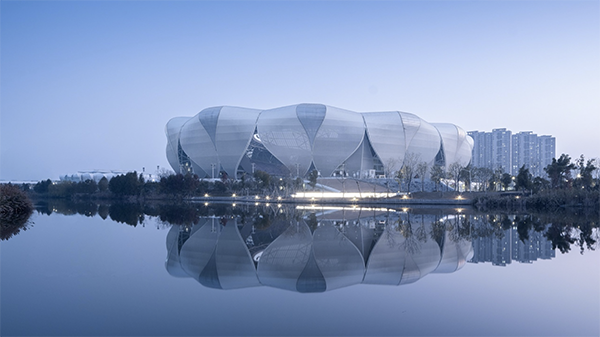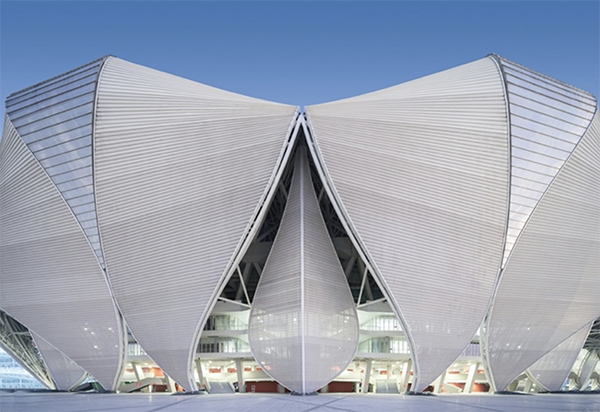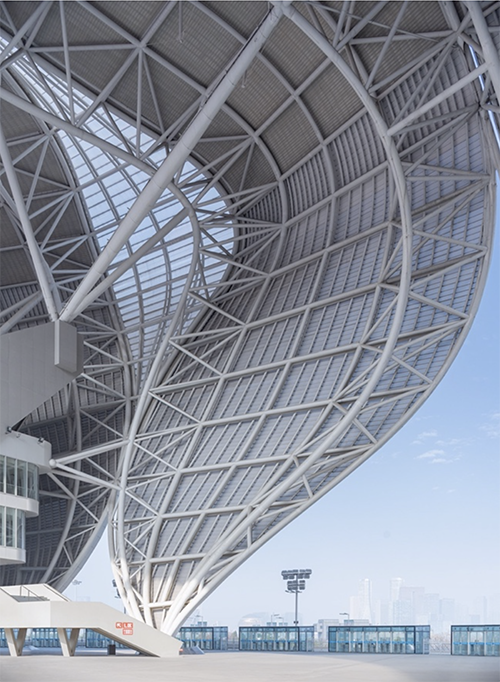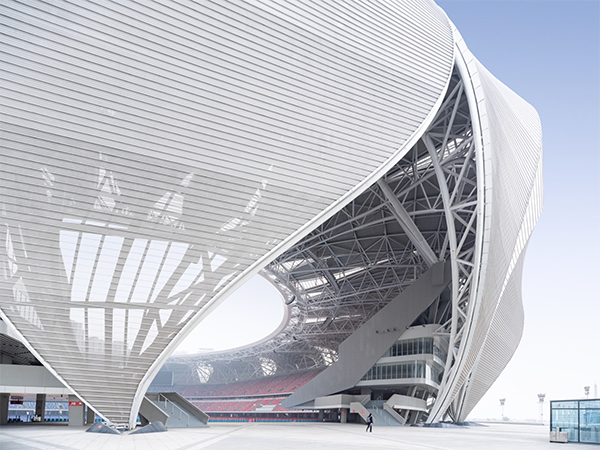
I think regular visitors will know I’m into workspace design which celebrates sustainability and well-beingness. A little bit surprisingly, given its incredibly poor record on emissions and human rights, this latest sports arena in China is both beautiful and environmentally sensitive, and I’m a big admirer.
Hangzhou is one of the most scenic cities in China, and its West Lake is renowned for its beauty, elegance, and unique foliage. The stadium design draws upon the area’s indigenous water lily, or lotus, as its inspiration, interpreting the form into a series of modular ‘petal’ structures that gracefully surround the stadium.

To be honest it doesn’t look like any other sports arena we can think of. China is by no means a stranger to the world of impressive stadium design – witness Beijing’s iconic Bird’s Nest. But the newest stadium addition impresses not only with its inspired design but also with its approach to sustainable architecture. The new Hangzou stadium is designed by Los Angeles-based architecture firm NBBJ, and is comprises of an impressive 80,000-seat arena, a 10,000-seat tennis court, swimming pools, and the inevitable retail space.
But what is more impressive is that the architects were tasked with reducing the amount of steel used in the structure. Though the Hangzhou Olympic Stadium is roughly the same size as the Beijing National Stadium, the iconic Bird’s Nest from the 2008 Olympics, it uses 60% less steel—approximately 16,000 tons versus 40,000 tons.
Steel is a necessary component in stadium architecture but it’s also a major cause of concern from a sustainability perspective. In 2018, the production of each ton of steel resulted in the creation of about two tons of carbon dioxide. So the creation of the Hangzou Centre has used something like 48,000 tons less of CO2 than the Bird’s Nest stadium which has got to be a huge saving towards global warming.
The design team achieved this reduction in two ways: by linking the steel shell and concrete seating bowl together at each level so the two systems worked in unison, and by providing additional structure at the top of the bowl to reduce the roof cantilever.

The plaza surrounding the stadium is also aimed to be as eco-friendly as possible. The whole area makes use of porous, light-coloured surfaces and green park spaces with maximum vegetation which greatly reduces water runoff from the site.

The Hangzhou Sports Centre is now recently opened to the public and is expected to encourage new (and hopefully sustainable) development in one of China’s most rapidly growing cities. Everyone hopes that the Hangzhou Arena will develop into a truly civic centre for the local community based upon sports and human wellness. We’ll track its progress.
